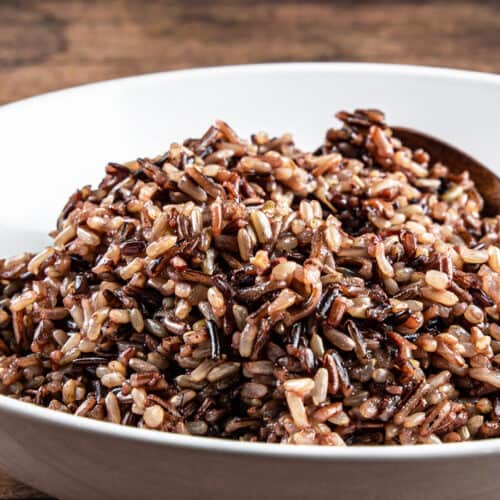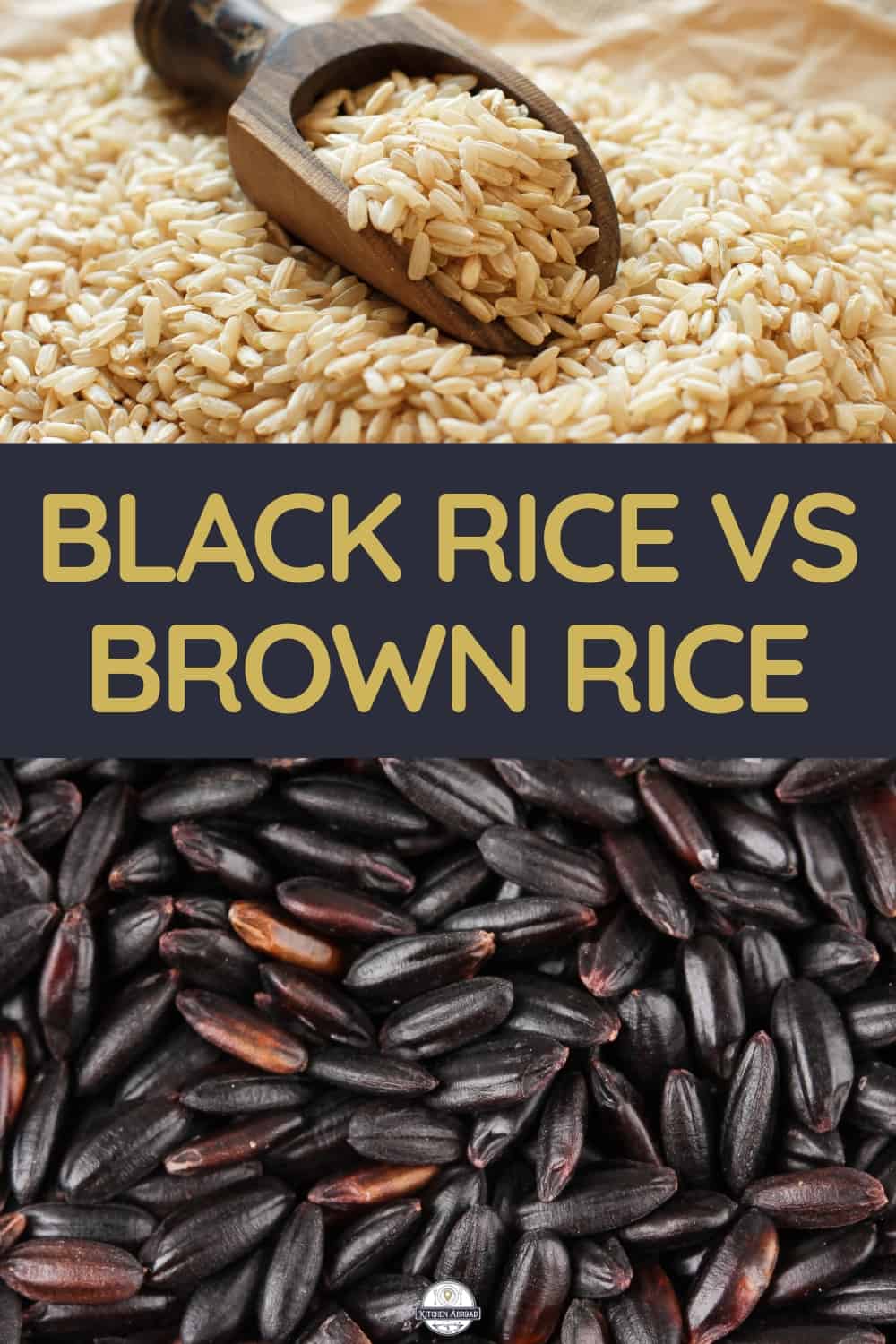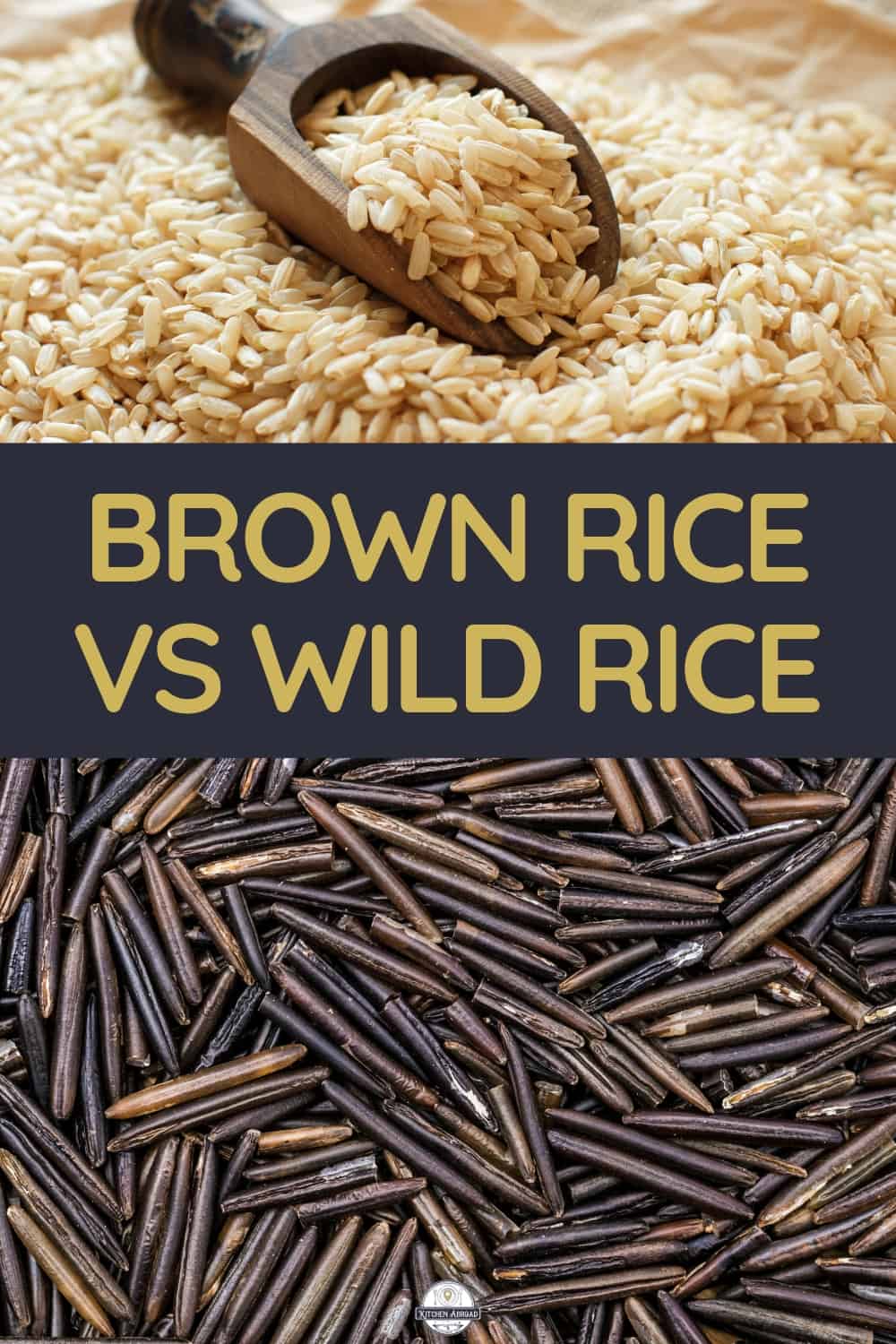Introduction

In the realm of grains, white rice and wild rice are two contrasting varieties that often find their way onto our plates. While they share similarities in terms of being staple foods in many cultures, there are distinct differences between the two. White rice is a commonly consumed and widely available grain that has undergone processing to remove the bran and germ, resulting in a polished appearance and milder flavor. On the other hand, wild rice, despite its name, is not a true rice but rather a type of aquatic grass seed that delivers a nutty flavor and a chewy texture. In this article, we will delve into the history, cultivation, nutritional value, and culinary uses of both white rice and wild rice, ultimately helping you make an informed decision about which grain is best suited for your needs.
Introduction To White Rice And Wild Rice
White rice and wild rice are two distinct varieties of grains that have been consumed for centuries. White rice, commonly found in many cultures, undergoes a processing method that removes the bran and germ, resulting in a polished appearance and a milder flavor. On the other hand, wild rice, despite its name, is not a true rice but rather the seed of an aquatic grass. It delivers a nutty flavor and a chewy texture, making it a unique option for culinary creations. Both varieties offer their own set of qualities, making them popular choices in different cuisines worldwide.
History And Cultivation Of White Rice And Wild Rice
White rice has a rich history that dates back thousands of years. It is believed to have originated in East Asia, specifically in China and the surrounding regions. Over time, it spread to other parts of the world through trade and exploration. Today, it is a staple food for many cultures and is grown in various countries, including China, India, and Thailand.
On the other hand, wild rice has a long history of cultivation by Native American tribes in North America. It has been an important part of their diet and culture for centuries. Traditionally, wild rice was harvested by hand in canoes, where the seed heads were gently beaten to separate the grains. Nowadays, it is both cultivated in paddies and harvested from the wild in regions such as Minnesota and Canada.
The cultivation of white rice involves planting rice seeds in flooded fields, known as paddy fields. The fields are carefully managed to ensure the right amount of water and nutrients for the rice plants to grow. Once the plants have matured, the water is drained, and the rice is harvested, threshed, and milled to remove the outer husk, resulting in the polished white grains we are familiar with.
On the other hand, wild rice is cultivated in shallow freshwater lakes, as well as in paddy fields. The cultivation process requires careful management of water levels and soil conditions to mimic the natural habitat of wild rice. Harvesting wild rice is a labor-intensive process, as it is done by hand or using special machinery that can gently collect the long, slender grains.
Both white rice and wild rice have fascinating histories and unique cultivation methods that have evolved over time. Understanding their origins and cultivation processes adds depth to our appreciation of these two distinct grain varieties.
White Rice

White Rice is a staple grain that is widely consumed and appreciated for its versatility. It has a mild flavor and a smooth texture, making it the perfect complement to a variety of dishes. White rice undergoes a processing method that removes the outer husk, bran, and germ, resulting in a polished and refined grain. This process significantly extends the shelf life of white rice and gives it a longer cooking time compared to its counterpart, wild rice. While it may lack in some nutritional elements, white rice remains a popular choice due to its easy digestibility and widespread availability.
White Rice Processing And Types
White rice goes through a processing method that involves removing the outer husk, bran, and germ. This results in a polished and refined grain that has a longer shelf life compared to wild rice. The processing also gives white rice a smooth, soft texture and a milder flavor. There are different types of white rice available, such as long-grain, medium-grain, and short-grain. Each type has its own characteristics and is suitable for different dishes. Long-grain white rice is popular for its separate and fluffy texture, while short-grain white rice is stickier and commonly used in sushi.
Nutritional Value And Health Benefits Of White Rice
White rice, although often criticized for its lack of nutrients, still provides some essential nutritional benefits. It is a good source of energy, as it is high in carbohydrates. White rice also contains small amounts of protein and B vitamins, such as thiamine and niacin. Additionally, it is low in fat and cholesterol-free, making it a good option for those watching their fat intake. While white rice may not offer as many nutrients as its counterparts, it can still be a part of a balanced diet when consumed in moderation alongside other nutrient-rich foods.
Wild Rice

Wild Rice is not actually a type of rice, but rather the seed of an aquatic grass that grows in freshwater lakes. It is native to certain regions in North America and has a distinct nutty flavor and chewy texture. Unlike white rice, wild rice is rich in nutrients, including protein, fiber, and antioxidants. It is also a good source of essential vitamins and minerals, such as B vitamins, magnesium, and zinc. Due to its unique taste and nutritional profile, wild rice is often used in a variety of dishes, from salads and soups to pilafs and stuffing. Incorporating wild rice into your diet can add a flavorful and nutritious twist to your meals.
Wild Rice Harvesting And Types
Wild Rice is harvested from freshwater lakes and rivers. The harvesting process involves gathering the seed heads, which contain the rice kernels, typically in late summer or early fall when the grains have ripened. The seed heads are then threshed to separate the rice from the husks. Wild Rice can be categorized into different types based on their appearance and origin, such as long-grain, medium-grain, and cultivated varieties. Each type offers its own unique flavor and texture, making Wild Rice a versatile ingredient for various dishes. Including these different types of Wild Rice in your culinary repertoire can add variety and depth to your meals.
Nutritional Value And Health Benefits Of Wild Rice
Wild Rice is not only delicious but also highly nutritious. It is rich in dietary fiber, protein, and essential minerals such as magnesium, phosphorus, and zinc. This nutrient-dense grain is low in fat and cholesterol, making it a healthy choice for those watching their weight or managing their cholesterol levels. The fiber in Wild Rice helps promote digestive health and keeps you feeling fuller for longer, aiding in weight management. Additionally, the protein content in Wild Rice is higher compared to white or brown rice, making it a valuable source of plant-based protein for vegetarians and vegans. Its natural antioxidants also provide numerous health benefits, including reducing inflammation and protecting against chronic diseases. Incorporating Wild Rice into your diet can contribute to overall health and wellness.
Cooking And Culinary Uses

White Rice and Wild Rice have different cooking methods and can be used in various culinary applications. White Rice is versatile and commonly used in dishes such as fried rice, pilaf, risotto, and sushi. It has a soft texture and absorbs the flavors of the accompanying ingredients well. On the other hand, Wild Rice has a chewy texture and nutty flavor, making it a great addition to salads, soups, casseroles, and stuffing. It can also be mixed with other grains or vegetables for a hearty side dish. Both Rice varieties offer endless possibilities in the kitchen and can be incorporated into a wide range of delicious recipes.
Cooking Methods For White Rice And Wild Rice
Cooking white rice is a simple process that involves rinsing the rice, adding it to a pot with water or broth, and simmering it until all the liquid is absorbed. The ratio of water to rice varies depending on the type of white rice used, so it’s important to follow the package instructions or use a rice cooker for precise measurements. Wild rice, on the other hand, requires a longer cooking time due to its tougher texture. It is recommended to soak the wild rice before cooking to reduce the cooking time. The soaked wild rice can then be cooked by boiling it in water or broth until tender, usually for about 45 minutes to an hour. It’s important to taste the wild rice for doneness and adjust the cooking time accordingly. By following these cooking methods, both white rice and wild rice can be prepared to perfection.
Recipes And Dishes Featuring White Rice And Wild Rice
White rice and wild rice can be used in a variety of delicious recipes and dishes. For white rice, it is a versatile grain that is commonly used as a side dish for a variety of cuisines such as Asian stir-fries, Mexican rice dishes, and Mediterranean rice salads. It can also be used as a base for pilafs, rice bowls, and stuffed peppers. On the other hand, wild rice adds a nutty and earthy flavor to dishes. It is often incorporated into soups, casseroles, and salads. Some popular dishes featuring wild rice include creamy wild rice soup, wild rice stuffing, and wild rice pilaf with mushrooms. Whether you’re cooking with white rice or wild rice, there are endless possibilities to explore in the kitchen.
Comparison

When comparing white rice and wild rice, there are several contrasting characteristics to consider. White rice, with its mild flavor and versatile texture, is a staple in many cuisines and is commonly used as a side dish. On the other hand, wild rice offers a nutty and earthy flavor, making it a unique choice for dishes. Additionally, white rice is resource-intensive to cultivate, requiring large amounts of water and chemical inputs, while wild rice is a more sustainable option. Overall, the choice between white rice and wild rice depends on personal preference and environmental considerations.
Contrasting Characteristics Of White Rice And Wild Rice
White rice and wild rice have contrasting characteristics that make them distinct from each other.
White rice, with its polished appearance and neutral flavor, is a staple in many cuisines. It has a soft and fluffy texture, making it versatile for various cooking methods. On the other hand, wild rice has a darker color, longer grain, and a nutty and earthy flavor. It has a chewy texture, adding depth and character to dishes.
White rice is commonly used as a side dish or base for stir-fries and sushi, while wild rice is often enjoyed in salads, pilafs, and stuffings. The differences in taste, texture, and appearance offer unique culinary experiences for those seeking variety in their meals.
Key Differences In Taste, Texture, And Appearance
White rice and wild rice have distinct differences in terms of taste, texture, and appearance. White rice has a mild and neutral flavor, allowing it to easily absorb the flavors of other ingredients. It has a soft and fluffy texture when cooked, making it versatile for various culinary applications. In contrast, wild rice offers a nuttier and earthier flavor profile that adds depth and character to dishes. It has a chewy texture, providing a satisfying bite. Additionally, wild rice has a darker color and longer grain compared to the polished appearance of white rice. These differences in taste, texture, and appearance offer unique culinary experiences for those seeking variety in their meals.
Conclusion
https://www.youtube.com/watch?v=_cc0b3QPoGw&pp=ygU0V2hpdGUgUmljZSB2cyBXaWxkIFJpY2U6IENvbnRyYXN0aW5nIEdyYWluIFZhcmlldGllcw%3D%3D

In conclusion, comparing white rice and wild rice reveals distinct differences in flavor, texture, and nutritional value. While white rice offers a versatile and neutral base for various dishes, wild rice stands out with its nuttier taste, chewy texture, and higher nutrient content. Depending on personal dietary preferences and health goals, both options can be incorporated into a well-balanced diet. However, the appeal of wild rice as a more nutrient-dense alternative makes it a worthwhile choice for those looking to explore new flavors and enhance their culinary experience. So next time you’re at the grocery store, consider adding wild rice to your basket for a unique and nutritious addition to your meals.
Health Considerations And Dietary Recommendations
When it comes to choosing between white rice and wild rice, there are some health considerations to keep in mind. White rice, although a staple in many diets, is relatively low in nutrients and fiber. It is also classified as a high-glycemic food, meaning it can cause a rapid spike in blood sugar levels. For individuals with diabetes or those trying to manage their blood sugar levels, opting for wild rice may be a better choice. Wild rice is packed with fiber, protein, and essential minerals, making it a healthier option. Furthermore, the nutty flavor and chewy texture of wild rice can enhance the overall eating experience, making it a more satisfying choice. Overall, incorporating wild rice into your diet can provide a range of health benefits and enhance the nutritional value of your meals. So, consider replacing some or all of the white rice in your diet with wild rice to support your overall health and well-being.
Final Thoughts On Choosing Between White Rice And Wild Rice
When it comes to choosing between white rice and wild rice, it ultimately depends on your personal preferences and dietary needs. White rice may be a staple in many diets due to its versatility and easy availability, but it lacks the nutritional value and fiber content of wild rice. On the other hand, wild rice offers a nuttier flavor, chewy texture, and a higher nutrient profile, making it a healthier option overall. Consider incorporating wild rice into your meals to enhance both taste and nutrition. Remember, variety is key in maintaining a balanced and healthy diet.
FAQ About White Rice Vs Wild Rice: Contrasting Grain Varieties
Q: What is the nutritional difference between white rice and wild rice?
A: Generally, white rice is processed and stripped of the bran and germ layers, resulting in lower fiber and nutrient content compared to wild rice, which is a whole grain with higher fiber, protein, and essential mineral content.
Q: How do the cooking times differ between white rice and wild rice?
A: White rice typically cooks faster than wild rice due to its processing, taking around 15-20 minutes, while wild rice requires longer cooking times, averaging around 45-60 minutes.
Q: Which type of rice is better for weight management?
A: Wild rice is often considered a healthier option for weight management due to its higher fiber content, which can promote a feeling of fullness and help in controlling appetite as compared to white rice.
Q: Can white rice be a suitable alternative for wild rice in recipes?
A: Yes, white rice can be used as a substitute for wild rice in recipes, but keep in mind the differences in texture, flavor, and nutritional value that may alter the final dish.
Q: Are there any culinary differences between white rice and wild rice?
A: White rice has a milder flavor and softer texture, making it versatile for various cuisines, while wild rice has a nuttier taste and more chewy texture, often used in gourmet dishes or mixed with other grains for added texture.
Q: Is there a significant price difference between white rice and wild rice?
A: Yes, wild rice is generally more expensive than white rice due to its harvesting process and limited availability, making it a premium grain choice compared to the more affordable white rice options.

The Bird ‘n’ Bike Cafe ‘n’ Bar is a charming establishment nestled in the heart of Chiltern, Victoria, where locals and visitors alike come together to enjoy delicious food, great company, and a warm, welcoming atmosphere. With 1187 likes and 136 check-ins, it’s clear that the Bird ‘n’ Bike has captured the hearts of many. Our cafe and Bar is open from Wednesday to Sunday, inviting guests to start their day with us from 8 am to 2:30 pm. Whether you prefer to dine in and savor the cozy ambiance or grab a delicious meal, we’ve got you covered.